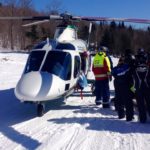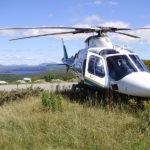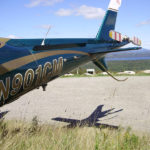If you head northwest from Lewiston, and drive nearly all the way to the Canadian border, you’ll find one of Maine’s most unique and isolated communities. Rangeley is well known for its crystal clear lakes, picturesque mountains and bountiful outdoor recreation opportunities.
But when you’re in Rangeley, or any of the 800 square miles of mountains and wilderness covered by Rangeley Fire Rescue and NorthStar Ambulance, you’re in one of the most remote communities in Maine. Sometimes two hours or more away from help, out here locals take responsibility for each other in a way that’s uncommon in less remote areas.
This area boasts one of the state’s most effective and cooperative emergency response systems. Fire Chief Tim Pellerin sums it up easily, “Teamwork in wilderness areas saves lives.”
In most parts of the state, LifeFlight is a secondary response, someone to call in the worst of situations. In the Rangeley area, accident victims are often miles away from the first responders, let alone a healthcare facility, which makes time a constant critical factor. Consequently, every call for help results in the same three-pronged approach: Rangeley Fire, NorthStar and LifeFlight of Maine.
Each of the three agencies has its own expertise. Rangeley Fire is proficient in vehicle extrication and several types of rescue including backcountry, wilderness, ATV, snowmobile, water and ice. NorthStar provides first aid and emergency medical skills. LifeFlight offers advanced emergency medicine and rapid transport to the appropriate medical facility.
In a typical 9-1-1 call, usually through Franklin County Dispatch, Rangeley Fire and NorthStar acknowledge the call and then immediately check to see if one of the two LifeFlight helicopters is available. The local crews establish a staging area closer to the scene where they assemble resources like snowmobiles, ATVs and rescue sleds. LifeFlight is activated and usually instructed to land at the local airport. The helicopter can be redirected from there if necessary. For winter rescues, chase snowmobiles that include a paramedic are sent from the staging area to pinpoint the exact location of the accident. Once it’s found, GPS coordinates are radioed back to the staging area. The rescue sled, along with additional paramedics, is then sent out to the scene to help. As more information is gathered, about both the location and the condition of the patient, the LifeFlight helicopter can be directed to the closest rural landing zone.
The glue that holds this entire complicated process together is communication, starting with the dispatchers at the 9-1-1 call center and MedComm. These communication specialists are monitoring the location of everyone involved, the timing and the weather to determine the safest and most efficient way to get the patient to the care he or she needs.
At its core, the success of this process can be attributed to a cooperative working relationship among all three agencies, which is rooted in the very culture of the Rangeley community.
What drives people who live in this remote corner of Maine to build such a sophisticated and effective system? Harold Schaetzle, Supervisor of the NorthStar Rangeley base, boils it down to one simple reason. “It’s all about what’s best for the patient.”







